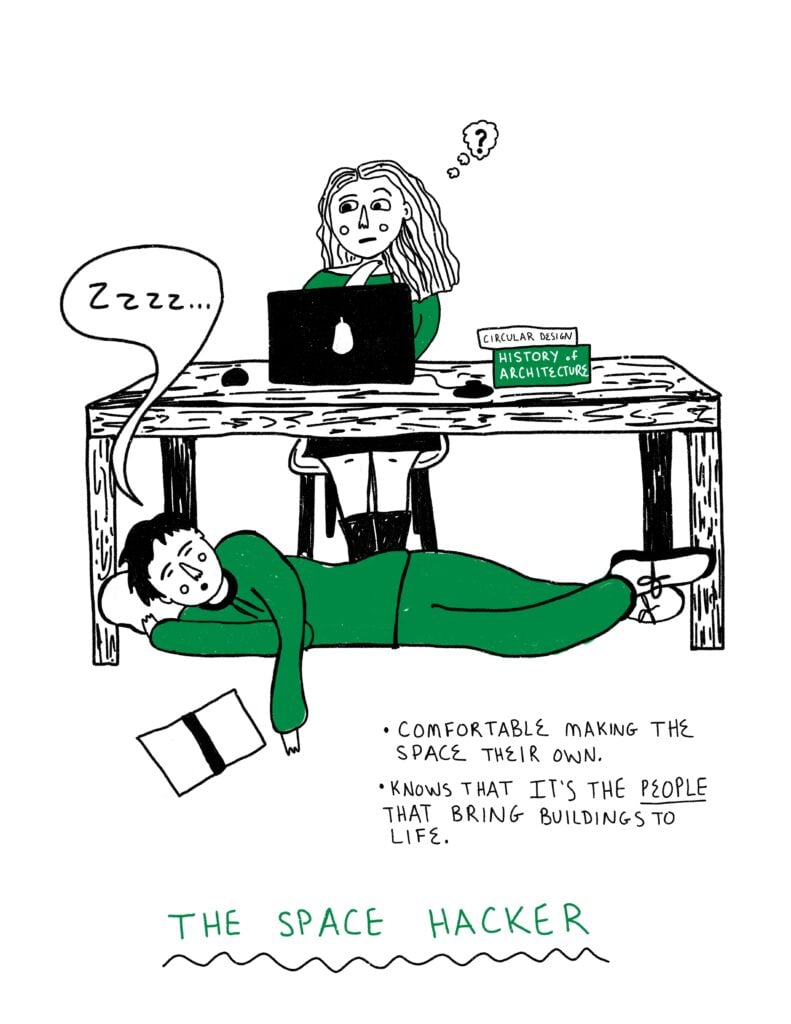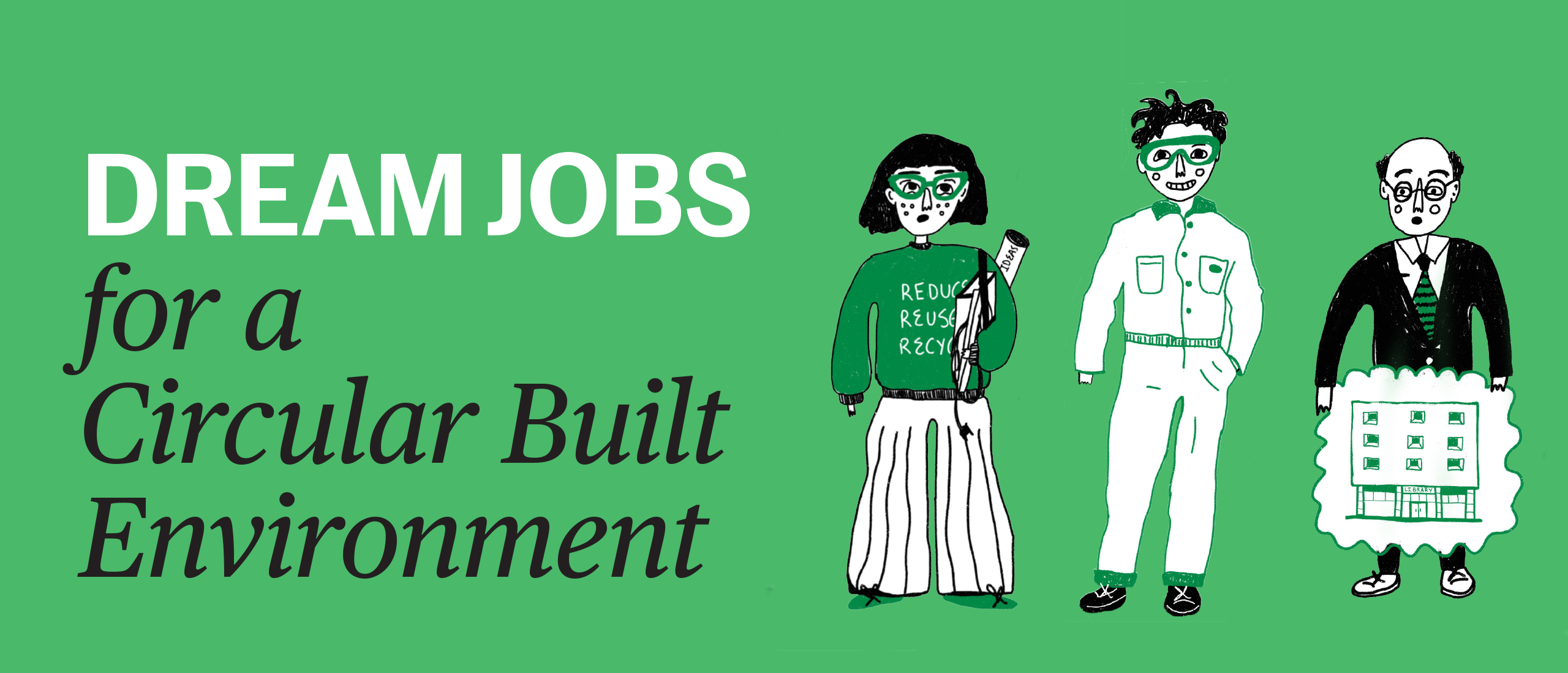
Dream Jobs for a Circular Built Environment
In Summer 2024 METROPOLIS brought together visionaries from across the building industry for its Circular Future Hackathon, aimed at reimagining how we design and construct in a way that aligns with circular design principles. Representatives and sustainability experts across global firms, manufacturers, and industry organizations joined forces to tackle the building sector’s greatest circularity obstacles. Following the virtual workshops, METROPOLIS shaped these concepts into comprehensive seven forward-thinking solutions.
Hackathon Participants: Pari Agarwal, Ross Barney Architects; Michael Cook, Andreu World; Camille Croll, HMC Architects; Julie Fuchs, CO Adaptive; Joey-Michelle Hutchison, Arcadis; Drew Lavine, Re:Vision; Ryan Vasquez, RIOS; Son Vu, Houser Walker Architecture; Jonce Walker, HLW; Rufina Wu, Perkins&Will; and Jaxson Stone, METROPOLIS’s associate editor and researcher.
The transition to a circular built environment isn’t only about materials and processes—we need people with different skills and attitudes to power the transformation of the building industry. Here are the kinds of professionals we might need for the adaptive reuse project of the future!
Scenario:
A design school wants to revamp its current library spaces to make space for more digital resources, flexible study rooms, and a new tool and equipment library. Some stakeholders want to demolish the current 1960s-era Brutalist library building to build a ground-up, state-of-the-art facility. Some think they should just move the library to a different campus building, while others advocate for renovating and reusing the underutilized parking garage of the current library building to add the necessary space and upgrades to the existing library.
The Anti-Demolition Owner
The library director strongly feels that they should stay where they are and NOT build new. To get the Facilities and Construction Management team on board, they stress the university’s past success with adapting historic buildings, and highlight case studies of other universities that have done the same. They also want everyone to know about the unique history of the current building and its role in the community.

Circular Design Catalyst
The advocacy and enthusiasm of the Circular Design Catalysts inspire design stakeholders to prioritize ecological impact and engage in circular practices, contributing to a culture that values innovative, resource-conscious design. To get a feel for the community’s relationship with the current library, the library director invites the school’s architecture and design students for a multi-day design charette with various university community members and local designers. After a day spent brainstorming in the concrete-walled library, the students present innovative solutions for circular design strategies and vote unanimously against the demolition of the original structure.
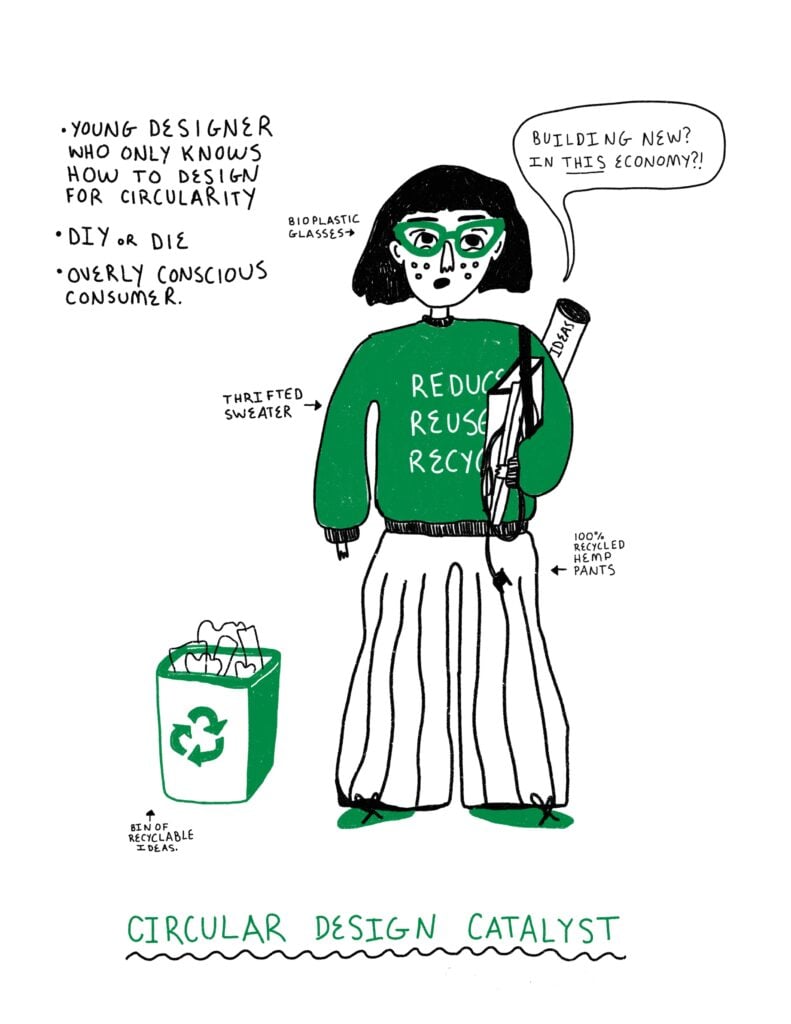
The Deconstruction Maestro
A passionate advocate for zero waste and resource preservation, the Deconstruction Maestro plays a vital role in renovation projects. With an eye for the hidden value in every item, this hands-on material expert is committed to disassembling and deconstructing objects and spaces and saving, repurposing, or rehoming as many materials as possible to save demolition waste from the landfill. For the Deconstruction Maestro, there’s no such thing as “trash”—only opportunities for creative thinking. With the right tools, this person can dismantle or deconstruct almost anything with care and precision. They collect and assess each material in the library for potential reuse, whether it’s old wooden beams, door handles, shelving, or even vintage lighting fixtures—and then decide which objects and materials go to the Material Magician for reuse.
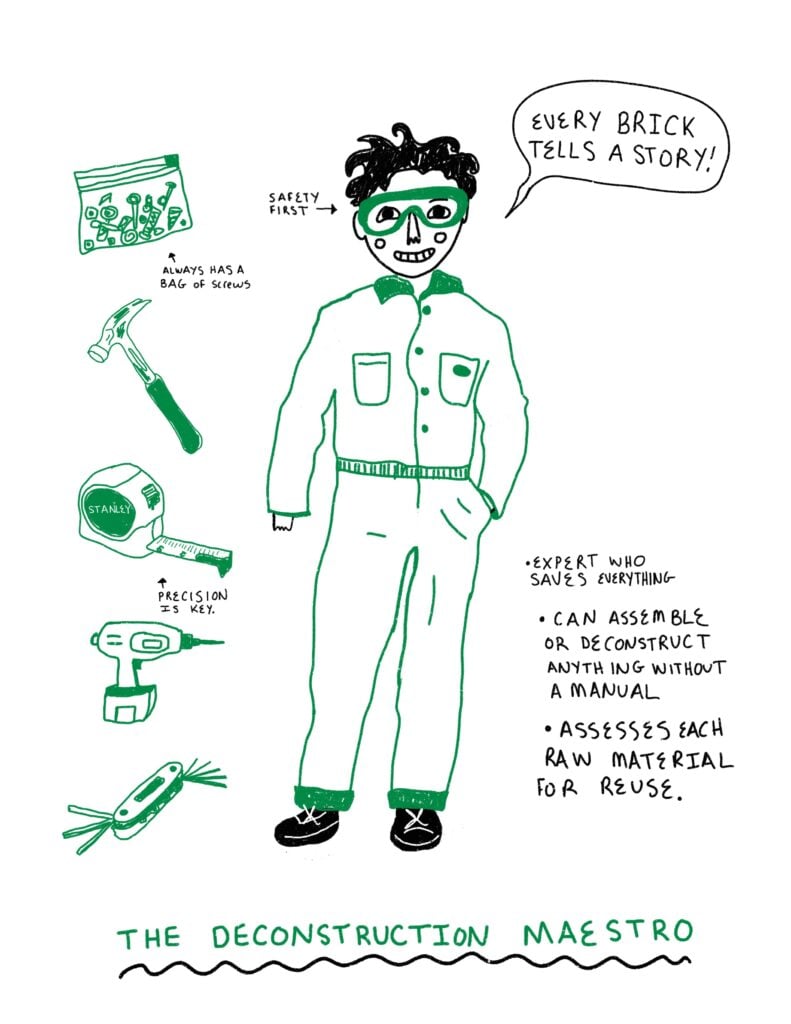
The Material Magician
Once an interior design firm is hired to transform the library within its original structure, the design team begins surveying the existing conditions. They review the collection of materials and objects gathered by the Deconstruction Maestro and determine what can be salvaged and reused in the project and what can be donated to reuse partner organizations. Some of the administrative furniture is in fine condition, but the heavily used carts and display tables need an upgrade. While a lot of the Library’s technology is approaching obsolescence, many of the vintage wooden shelves and tables remain as strong and sturdy as the building’s concrete walls.
The Material Magician works with the Circular Design Catalysts to organize additional circular design workshops with the design team and community members, prompting them to consider how the materials can be reused in the new library interior. By collaborating with the student-led zero-waste group, the school’s woodshop manager, and select design faculty, the team designs and builds a lounge space outfitted with a simple modular furnishing concept built out of the deconstructed shelving wood.

Interior Turnover Specialist
With expertise in resource and asset mapping, the Interior Turnover Specialist manages the project’s transition. Acting as a resource matchmaker, they bridge gaps between designers, facility managers, and asset management companies to ensure that any remaining materials and furniture from the project are allocated across project stages or donated to partner organizations. Their skill in networking with multiple stakeholders fosters collaboration, enabling the project team to utilize resources, maximize each material’s lifecycle, and minimize waste sent to the landfill.
The Interior Turnover Specialist actively cultivates access to secondary markets and local reuse networks. They achieve this by building relationships with local vendors, community reuse centers, and asset exchange platforms that specialize in secondhand, surplus, or salvaged materials.
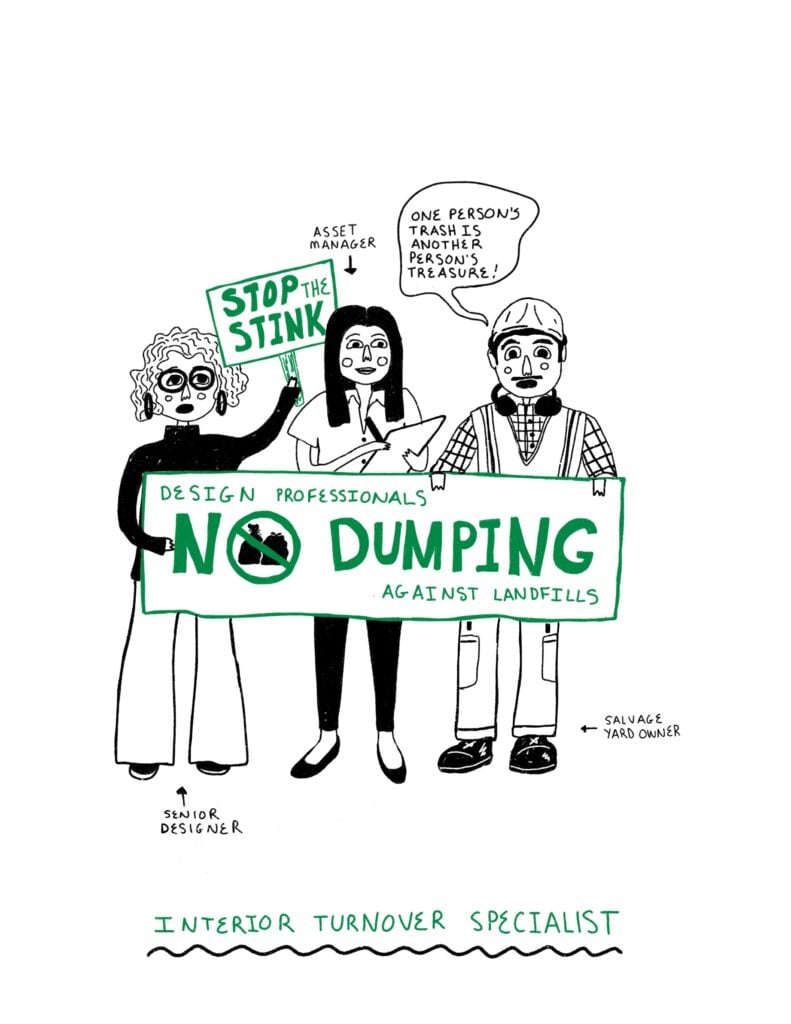
The Space Hacker
Following the new library opening, the director sees a huge spike in usage numbers on the part of students, faculty, and visiting scholars. While one of the benefits of the renovation is the creation of new windows and skylights to let in more natural light, the university’s creatives are still able to find a dark, quiet corner for an afternoon nap.
